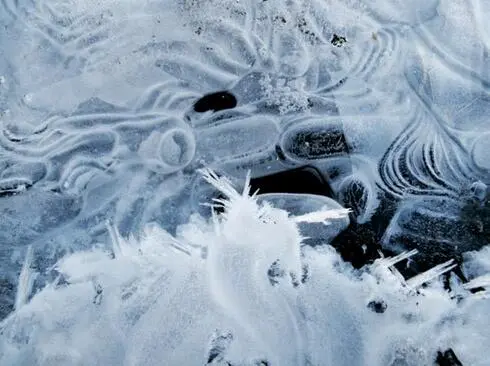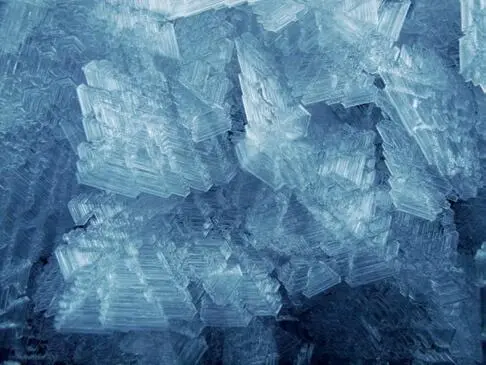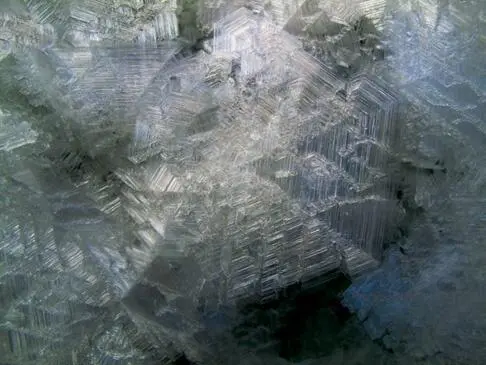Bruce Barnbaum - The Art of Photography - An Approach to Personal Expression
Здесь есть возможность читать онлайн «Bruce Barnbaum - The Art of Photography - An Approach to Personal Expression» весь текст электронной книги совершенно бесплатно (целиком полную версию без сокращений). В некоторых случаях можно слушать аудио, скачать через торрент в формате fb2 и присутствует краткое содержание. Жанр: Старинная литература, на английском языке. Описание произведения, (предисловие) а так же отзывы посетителей доступны на портале библиотеки ЛибКат.
- Название:The Art of Photography: An Approach to Personal Expression
- Автор:
- Жанр:
- Год:неизвестен
- ISBN:нет данных
- Рейтинг книги:5 / 5. Голосов: 1
-
Избранное:Добавить в избранное
- Отзывы:
-
Ваша оценка:
- 100
- 1
- 2
- 3
- 4
- 5
The Art of Photography: An Approach to Personal Expression: краткое содержание, описание и аннотация
Предлагаем к чтению аннотацию, описание, краткое содержание или предисловие (зависит от того, что написал сам автор книги «The Art of Photography: An Approach to Personal Expression»). Если вы не нашли необходимую информацию о книге — напишите в комментариях, мы постараемся отыскать её.
The Art of Photography: An Approach to Personal Expression — читать онлайн бесплатно полную книгу (весь текст) целиком
Ниже представлен текст книги, разбитый по страницам. Система сохранения места последней прочитанной страницы, позволяет с удобством читать онлайн бесплатно книгу «The Art of Photography: An Approach to Personal Expression», без необходимости каждый раз заново искать на чём Вы остановились. Поставьте закладку, и сможете в любой момент перейти на страницу, на которой закончили чтение.
Интервал:
Закладка:

This image kicked off three successive days of digital macro photography of ice forms on my property, and nearby, during a spell of extremely cold weather .
Figure 16-6. Ice, December 10, 2009
I could continue with examples of my work and my thoughts concerning their creative aspects, but I’ll stop here. I don’t want to fall into the trap of saying too much about my own work. Since I know my work best, I’m simply using it to provide convenient examples for the ideas I wish to express. Creativity can be judged better by others—and best over a long period of time to allow historical perspective. Far be it from me to tread on the domain of critics or historians!
Be Prepared for Imagination, Innovation, and Creativity
Periodically I receive requests from high school and college students for information about my photographic background, my work, and my thinking for a paper they have to write. Since they have chosen me as the artist they wish to write about, I feel honored and always cooperate. Recently one student asked me a question that began, “When you were in your prime...” Stop a moment, dear reader, and ask yourself how you would respond to those words. I must admit that I was more amused than offended, but it was close!
I responded by saying that I feel I’m still in my prime (thank you very much!) because I keep looking for new things, I have the same high level of enthusiasm, I have the same desire to produce new and insightful imagery, and I still strive for top quality at all times. Was I just being defensive, or was there an element of truth in my answer?
Within days of responding to that student (early December, 2009), the weather at my home north of Seattle in the North Cascade Mountains entered a second week of subfreezing temperatures, varying between 8° and 25°F with dry, cloudless conditions. Rime ice (also known as hoar frost) grew steadily on tree limbs, grasses, bushes, and anything that was open to the frigid air. When the ice shards had grown to lengths I had never seen before, a light bulb went on in my head. Realizing that I may never again see ice formations like that, I started to photograph them.

These astoundingly intricate ice crystals on a campground picnic table—some more than an inch across—drew my attention for more than an hour of fantasy photography. It was like looking straight down into a futuristic cityscape of glass skyscrapers .
Figure 16-7. Crystalline World, Blue #12

At the same picnic bench the next morning, I found new forms and a completely different color balance in the crystalline ice. These crystal images are works in progress, made during the revision and production stages of this book. How they will ultimately end up, time will tell. To me, the important thing is the excitement of the discovery, the seeing, and the eventual completed imagery that all add up to a wonderfully creative experience .
Figure 16-8. Crystalline World, White #7
I turned not to my 4 × 5 film camera (my general camera of choice) and film, but to my digital camera, which I could handhold and easily move left or right, forward or back, up or down. With my 4 × 5 camera, I couldn’t possibly get my tripod close enough, and if I could, the constraints of moving the camera position millimeters at a time would have been daunting. I started along a small stream that runs through my front yard (Figure 16-6), squatting down, hand-holding the camera less than a foot from the subject matter. This was basically new to me. I was just having a good time with the images I made that day and reveling in the ease of making them. It was fun, pure fun. I doubt that I produced anything great, but I enjoyed working with the ice and with the camera.
The next morning, taking my dogs for a walk at a nearby U. S. Forest Service campground that is closed during the winter months (making it perfect for dog walking), I noticed even more remarkable crystals on picnic tables set in a small open meadow by the river. I didn’t have my camera with me, but I examined these extraordinary ice crystals closely. Then I returned to the campground in the late afternoon with the camera—and without the dogs—to photograph these amazing natural structures. I did nothing to alter the white balance and enjoyed the overall blue cast on the crystalline structures. With the camera in macro mode, I was so close to the intricate ice crystals at times that I displaced them while moving the camera. In other words, the camera was literally touching the subject matter. This also was completely new to me (Figure 16-7).
The previous day I realized how easily I can move around for macro imagery with the digital camera, but at the picnic table I found compositions on the fly as I slowly moved the camera over the vast complexity of hexagonal, sparkling crystals. It was exhilarating. It was fun. But it was also meaningful to me. I was dead serious about what I was doing. Photographing these crystals had a distinctly artistic feel about it, and that’s a visceral feeling I can’t begin to explain in words.
The next morning temperatures rose slightly but still hovered below freezing. I returned for additional exposures, expecting to examine the ice-encased ground cover and adjacent grasses for entirely different images—but instead, I returned to the picnic table. I immediately noted from the camera display that the mid-morning light gave me a very different color balance. It was almost colorless, not the all-pervasive blue cast I encountered the previous afternoon. It was wonderful. I did indeed find new and different forms (Figure 16-8).
During the day the temperature rose and snow began to fall. Three inches quickly covered the ice crystals. By late afternoon, the snow turned to rain, reducing everything to mush and slush. By the next morning, it was all washed away. The old saying, “He who hesitates is lost” applied perfectly. Fortunately I made my photographs at the peak of the display.
Now, consider this: How often have you been in a conversation, debate, or argument and later thought, “I should have said...”? Similarly, how often have you thought, “I should have photographed that unusual thing”? Of course, the realization came long after you had the chance to make the photographs. Instead of getting caught in that syndrome, I acted quickly.
The three figures you see here—one from each day of shooting—represent little more than my preliminary ideas about how I may process the RAW images. In essence, you’re viewing the equivalent of the straight contact proofs I study for black-and-white darkroom printing. I’m excited about the possibilities. I’ve never seen anything like these crystals. They look, to me, like extraordinary large, planned structures... whole cities of giant, gleaming glass skyscrapers seen from above. Less than two inches in depth, they seem to keep going deeper and deeper into space. Time and my evolving ideas will determine the final printing of these images.
Several lessons about creativity emerge from this episode. First, there’s the art of noticing—in this case, noticing the exceptional ice crystals, initially at home, then at the campground. Second, there’s the recognition that even a picnic table can provide the perfect platform. You’ve got to be prepared for something different. Although I’ve tried photographing rime ice before, I was never successful using my 4 × 5 camera. This time I had a different camera, a different tool, to work with. The digital camera in macro mode gave me both the ability to move in closer and to move about freely, two advantages that the 4 × 5 couldn’t match. While I use my 4 × 5 film camera for most of my photography, it would have been inappropriate and unproductive for this subject matter. Mark Twain once observed, “If the only tool you have is a hammer, it’s amazing how many things look like a nail.” So the third and fourth lessons are thinking the issue through and properly matching the tool to the job.
Читать дальшеИнтервал:
Закладка:
Похожие книги на «The Art of Photography: An Approach to Personal Expression»
Представляем Вашему вниманию похожие книги на «The Art of Photography: An Approach to Personal Expression» списком для выбора. Мы отобрали схожую по названию и смыслу литературу в надежде предоставить читателям больше вариантов отыскать новые, интересные, ещё непрочитанные произведения.
Обсуждение, отзывы о книге «The Art of Photography: An Approach to Personal Expression» и просто собственные мнения читателей. Оставьте ваши комментарии, напишите, что Вы думаете о произведении, его смысле или главных героях. Укажите что конкретно понравилось, а что нет, и почему Вы так считаете.












